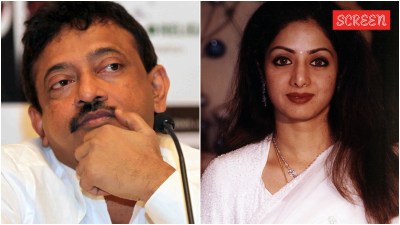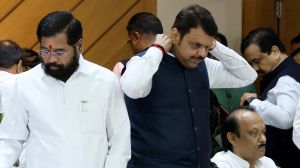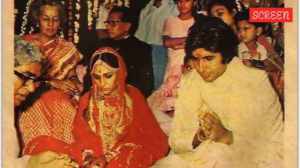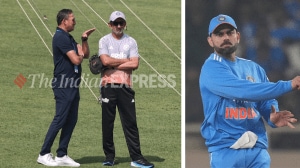On the Sena’s "razor’s edge"
During my successive tenure as DCP in charge of two zones, I also had my baptism in trade union violence. Fernandes and the Communist uni...

During my successive tenure as DCP in charge of two zones, I also had my baptism in trade union violence. Fernandes and the Communist unions were the main players on the labour scene at that time. He was notorious for declaring a Bombay bandh’, a general strike, at the drop of a hat. Efforts by the government to counteract his influence with the help of the Shiv Sena finally succeeded, but not without a price. The Communists were similarly subdued. Shiv Sainiks were more daring because they had nothing to lose, whereas the Communist trade unionists were in danger of losing their main support base – mainly blue-collar workers belonging to the lower middle classes. The Shiv Sena had targeted this constituency. It had succeeded with unemployed youth, but it was eager to also get organised labour on its side.
A Communist MLA, Krishna Desai, was alleged to have been murdered by Shiv Sainiks in a blatant attempt to provoke the Communists. There was much tension and some clashes following this murder. The funeralprocession of the murdered MLA passed through my jurisdiction, past Shiv Sena Bhavan. My attempts to persuade the Communists to change the route failed. Finally, I had to guard the Bhavan with a massive contingent of policemen. Even then, a volley of stones was thrown by the processionists at the Bhavan as well as at the police guarding the building. At this juncture, I warned the processionists in no uncertain terms. I even took out my revolver and brandished it in the air. This angered Comrade Reddy and his wife, two leading members of the CPI. They, in turn, threatened to deal with me after my bullets were emptied. It was a touch-and-go affair. The processionists could have easily overwhelmed the policemen and destroyed Sena Bhavan. If that had happened, citywide riots would have followed.
Another incident which is also vivid in my memory is that of a sea of Sainiks squatting in the middle of the road just outside Sena Bhavan and stretching beyond the bend in the road, out of reach of one’s eyes. I hadreceived information after a Shiv Sena meeting had terminated at Shivaji Park that the Sainiks had got into an altercation with a traffic constable on duty and were refusing to move ahead. They had blocked the entire road and brought all traffic to a halt.
Along with Keki Balsara and Appa Kulkarni, two of my ACPs, I rushed to the spot in a jeep. When we reached there, I got so furious at seeing this mass of indisciplined boys challenging the might of the State because of a perfectly legitimate instruction issued by a policeman on duty that I rushed towards them with only a stick in my hand. My two assistants, who were much older men, were dumbstruck. In any case, they could not have kept pace with me. Seeing me charging towards them, the boys in the front row were taken aback. They got up and began running. That was not easy because the whole road was occupied by squatting Sainiks. When the front ranks took to their heels, the boys behind also began running while those who could not see anything because ofthe bend in the road did likewise. The result was that 3,000 or 4,000 or perhaps more Sainiks, with their flags and flag poles, ran for cover, not knowing why exactly they were running away. They left their footwear behind the road. They wore sandals and chappals and hence these could be easily slipped off their feet.
Finally, when the road was clear, somebody realised that there was only one man chasing them. They regrouped, except, of course, for those who had got so frightened of the unknown peril and had gone home by the quickest possible means. Their leaders, including Manohar Joshi, who is now the Chief Minister of the state, came to discuss the incident with me. My two ACPs now took over the mantle of combat. Appa Kulkarni, in particular, argued with Joshi and the others, explaining to them why the DCP had been moved to anger.
While we were talking to Manohar Joshi and other leaders, many boys had surrounded us. One of them quietly ran a razor blade on my back. I did not know it then since I myselfwas engrossed in argument. But that night, when I reached home and had a shower. I felt a burning sensation in my back. It was then that I noticed that my uniform shirt had been neatly cut with a blade and that there were blood stains on it. The injury was only skin deep.
Balasaheb Thackeray arrived the next afternoon to complain to Police Commissioner, S G Pradhan, about my impudence’. I had already apprised the commissioner about what I had done and about the attack with the blade. He had asked me to keep my blood stained clothes ready, to be shown to the Shiv Sena chief. When Thackeray began his litany, the commissioner retorted with his own complaint. Thackeray said that it was unfortunate that I had been assaulted by one of his Sainiks, but I had asked for it because of my impetuosity. He pleaded with the commissioner to instruct me not to be so foolhardy in future. Pradhan had a good laugh after Thackeray left. He found it rather comic that a few thousand Sainiks had dispersed in a trice when facedwith a one-man baton charge.
My four-and-a-half years as DCP in Bombay gave me enough experience in grassroot policing of a big metropolis. There was never a dull moment. A DCP in Bombay city has to be on his toes for each of his waking moments. Even when he is asleep, he is often summoned to face piquant situations. This is not only during riots, when officers cannot go home for days together. At such times an officer may have to eat, sleep and perform his ablutions in a police station. Some calls come quite unexpectedly, as it happened one night. One of my ASPs, Keki Balsara, who was a great stickler for discipline, attempted to discipline a taxi driver near Ghatkopar in the eastern suburbs. I received a telephone call from the inspector in charge of Ghatkopar police station, asking me to rush down since all taxi drivers in the area were on the warpath. They demanded action against the ACP and refused to remove their taxis from the road till this was done.
Late at night, around 2 am, I drove down to thepolice station and confronted the taxi drivers. After a lengthy argument and on the promise of an enquiry the next day, the matter was temporarily settled and the obstruction removed. Usually, it is the first few moments that matter in such incidents. It is not possible for police officers to keep their cool at all times. They are also human beings with their individual attitudes, and weaknesses. These weaknesses may sometimes translate into a problem. The damage can be repaired if one keeps one’s wits about one and is able to communicate with the opposite party. Natural skills are more important than acquired ones on such occasions. The officer should be able to able to cajole, warn and even thank his adversaries if necessary. The exact nature of the methods employed and their timing cannot be spelt out on paper. One has to play it by ear. Quick decisions have to be taken. Concessions may have to be made. Egos may have to be pampered. But, at the same time, the officer responsible for the problem should notbe belittled, and nor should he feel that he has been let down. The morale of the force is of prime importance. The final compromise arrived at should not appear to be a surrender in the eyes of one’s own officers and policemen. Yet, it must be acceptable to the other side. In this Ghatkopar affair, I was lucky to hit upon the precise method. It is not possible to describe it exactly, but I had a comfortable feeling that it was a job well done. The Commissioner of Police, to whom I reported early next morning, thought I had acquitted myself creditably and defused a possibly ugly confrontation. He had received reports from other sources besides mine.
- 01
- 02
- 03
- 04
- 05































